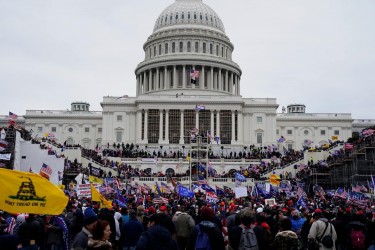James R. Jones, an assistant professor of African American studies at Rutgers University, was watching as the mob rioted through the Capitol's great rooms and hallways. After the tear gas cleared, he knew what was likely coming next: "It wasn't lost on me that it was going to be Black workers who had to clean up after their mess."
Jones was an intern at the Capitol during his undergraduate years at George Washington University, and was struck with how racially bifurcated it was back then. "Whites work for whites, Black staffers work for Black lawmakers, Latino staffers work for Latino members, and so on," he says. And he says there is a largely overlooked community, almost exclusively people of color, who make sure the Capitol complex runs smoothly.
"There's a whole army," Jones points out, "workers who are mostly Black and Brown, who really are the custodians of Congress. They are making sure this vast physical complex is up and running for lawmakers, staff and visitors."
Jones writes about the Capitol's segregation in his forthcoming book, The Last Plantation: Racism in the Halls of Congress, which will be published later this year by Princeton University Press. I talked to him about the book's provocative title, the people who work behind-the-scenes, and some of the things Congress could do to balance out its racial inequities. Our conversation has been edited for length and clarity.
If I were to walk through the Capitol Hill complex and randomly pop into various Senate or House offices, what would I see? Do these places look like America?
Well, you'd see that it's majority white. And part of that is Congress's own fault. Congress does not collect demographic data on who it employs. So it becomes really hard to see and measure racial representation among senior staffers. I've been part of an effort to collect empirical demographic data on congressional staffers, whether they're senior staffers or interns. What we've been able to see is that a lot of the staffers of color are employed by members of Congress who themselves are people of color.
It matters who's in the room when policy decisions are being made because those decisions will affect everyone. Staffers are instrumental in helping lawmakers think through complicated issues, issues that will confront communities of color. So whether you're talking about policing or climate change or even economic policy, it matters who's in the room and it matters what perspectives are being heard and listened to as policy is being made.
























